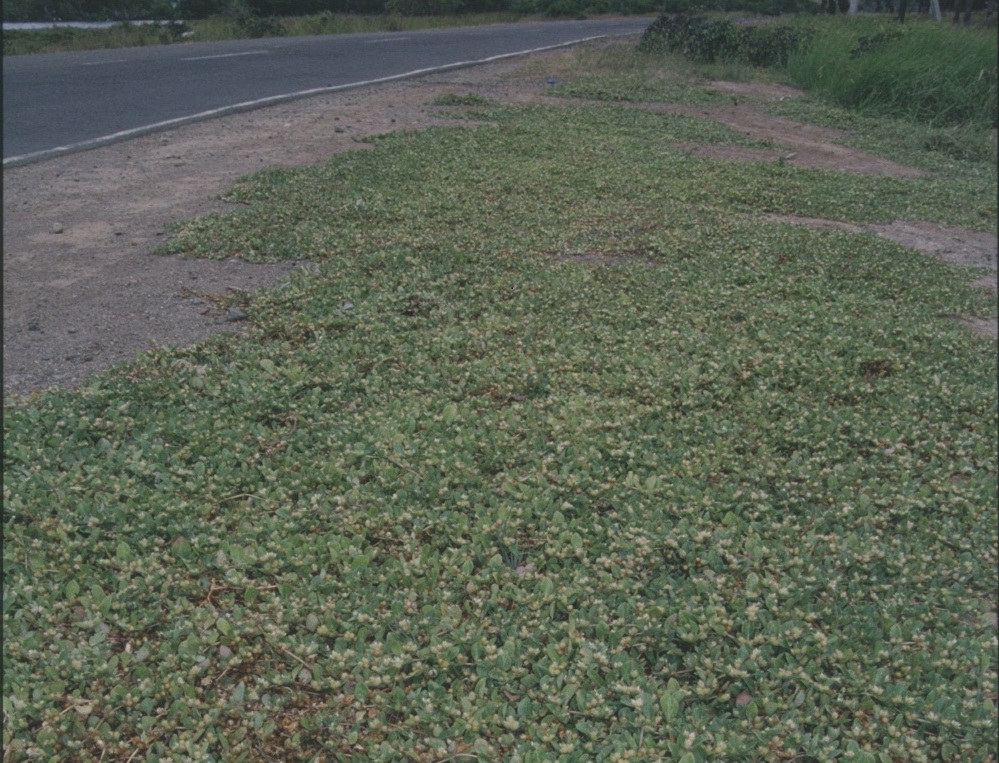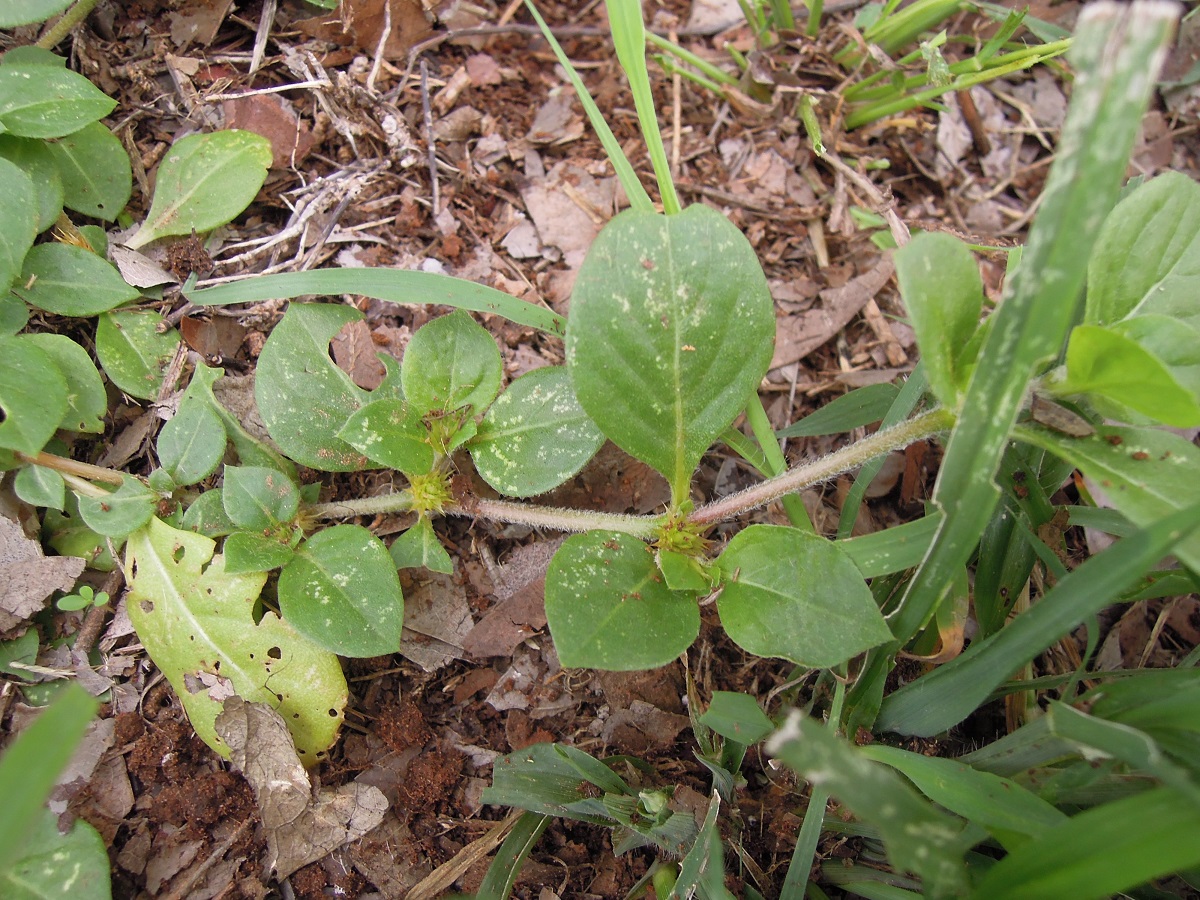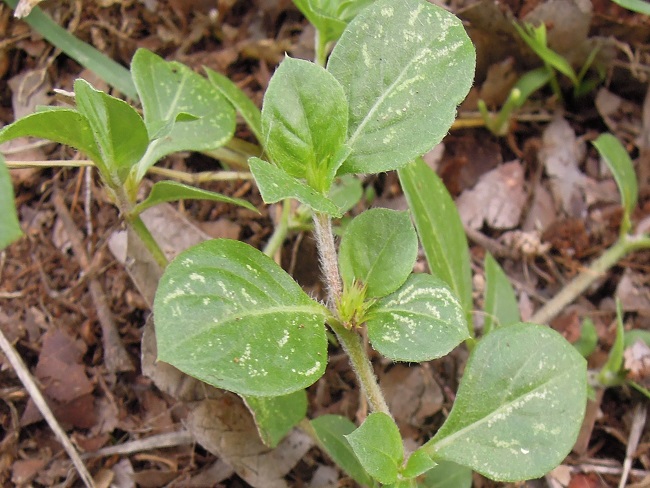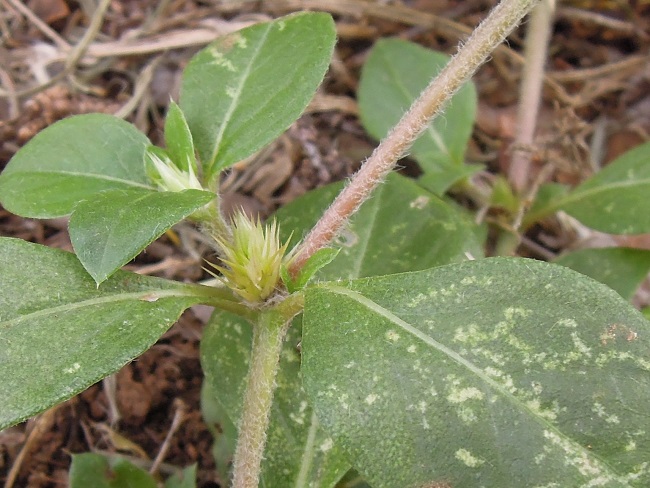Khaki weed
Scientific name: Alternanthera pungens
Declaration status: Class B
Khaki weed is a native of tropical America. It’s not known how it came to Australia, but it was first recorded in New South Wales in 1898, then in Queensland in 1910.
It is now widespread in parts of Australia including the Northern Territory where it has been recorded in the Darwin, Gulf, Katherine, Victoria River, Barkly and Alice Springs districts.
For more information get the khaki weed identification fact sheet PDF (1006.6 KB).
Impact
Khaki weed can have all of the following impacts:
- prickly seed bracts can cause injury to humans and animals
- invades pastures, lawns, parklands, around bores and along river banks
- invades disturbed areas, roadsides, degraded pastures and playing fields
- competes with irrigated and dry-land lucerne and it contaminates hay.
Identification
You should use this as a guide. There may be other plants or weeds that look similar.
- spreads over the ground, forms thick mats, dries out in the dry season after seeding
- stems form roots at the nodes
- leaves are 1 to 3cm long, rounded with a slight taper at the end
- occur as dense clusters in the axils of leaves
- flowers yellow/green when young, become straw coloured when mature
- each flower is surrounded by stiff pointed bracts
- forms a chaff coloured prickly burr about 1cm long
- yellowish amber seeds produced in large quantities, 0.1 to 0.2cm diameter contained within the burr.
If you are unsure, contact the Weed Management Branch.
Control
Chemical control
The best time to treat khaki weed is from December to March. Below is a list of treatment methods that can be used.
| Chemical and concentration | Rate | Situation, method and notes |
|---|---|---|
|
2, 4-D amine 625 g/L Various trade names | 320ml / 100 L |
Seedling or adult (individuals or infestation): Foliar spray - apply when actively growing |
|
Glyphosate 360 g/L Various trade names and formulations | 10ml / 1 L |
Seedling or adult (individuals or infestation): Foliar spray - apply when actively growing |
|
MCPA 340 g/L + Dicamba 80 g/L Various trade names | 350ml / 100 L |
Seedling or adult (individuals or infestation): Foliar spray |
Non-chemical control
Hand pulling and grubbing
Weeds, including their roots, are physically pulled out of the ground by hand or using hand tools. This is an effective method of control for individual weeds and recent outbreaks that haven’t released seeds yet, but it requires a lot of labour.
Spread
Isolated plants should be hand removed and the area burnt to reduce the seed population. Care should be taken when mowing and walking through infested areas as this will spread the seeds.
Spread prevention
You can prevent the spread of khaki weed by doing all of the following:
- map infestations to help develop a management plan
- control minor infestations, isolated outbreaks or seedlings first
- designate wash down areas and actively work to prevent contamination of clean areas
- monitor areas that you have treated and watch for re-infestations.
Give feedback about this page.
Share this page:
URL copied!



